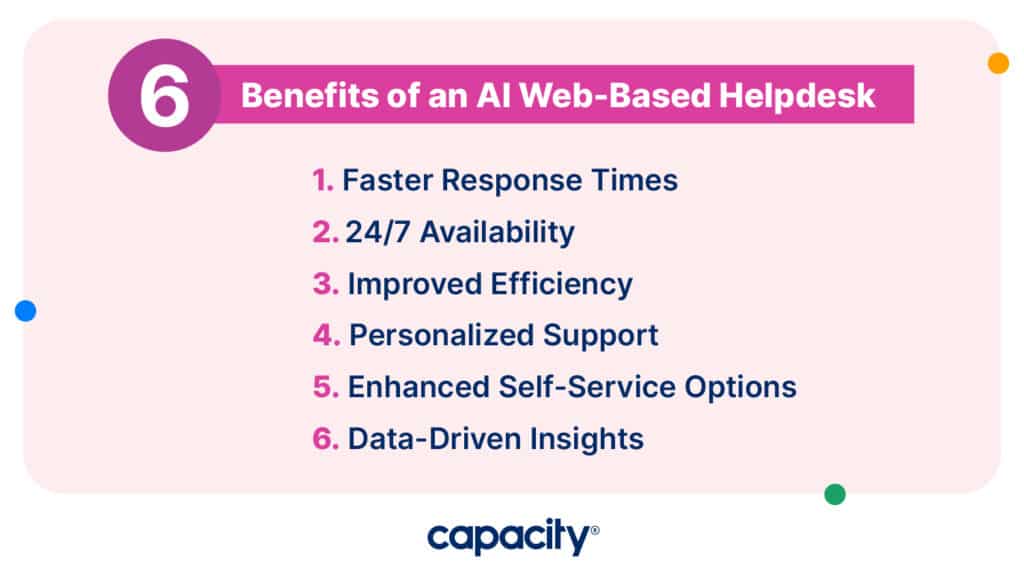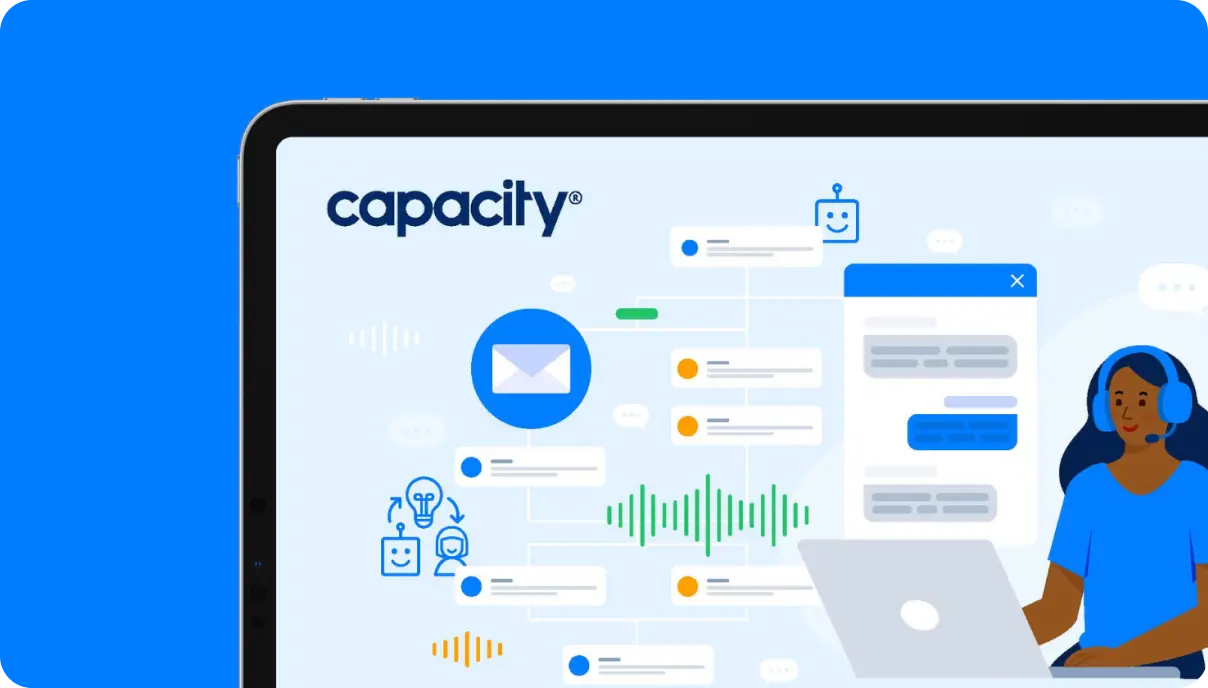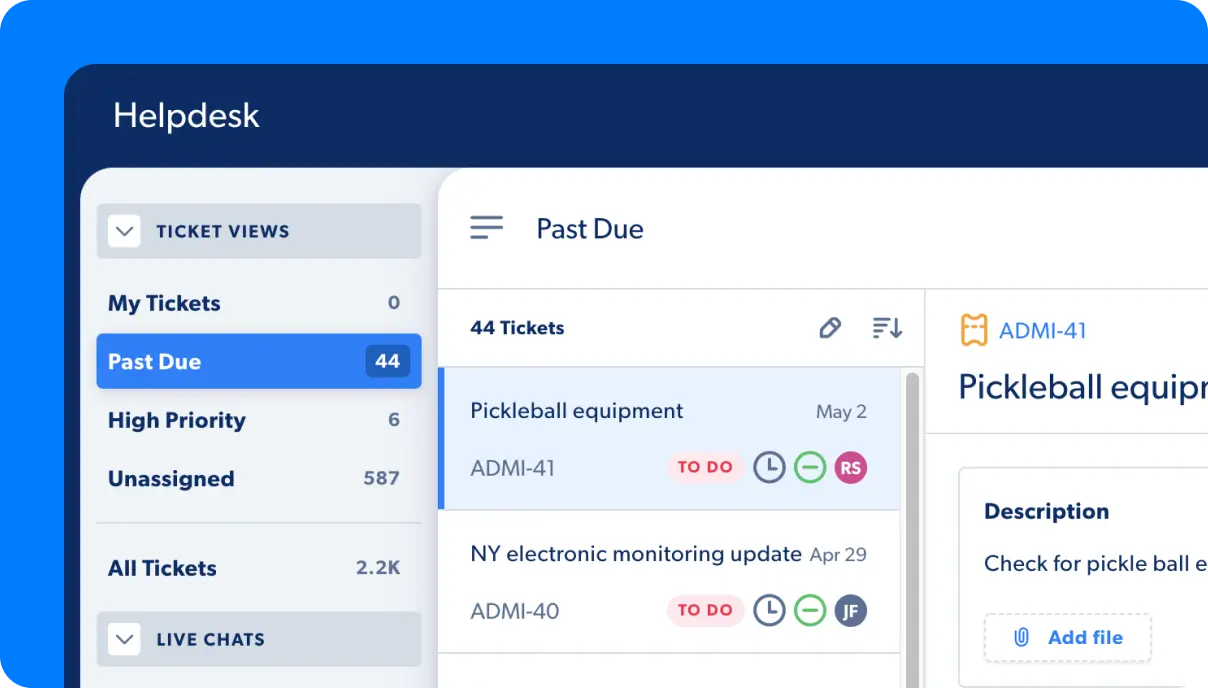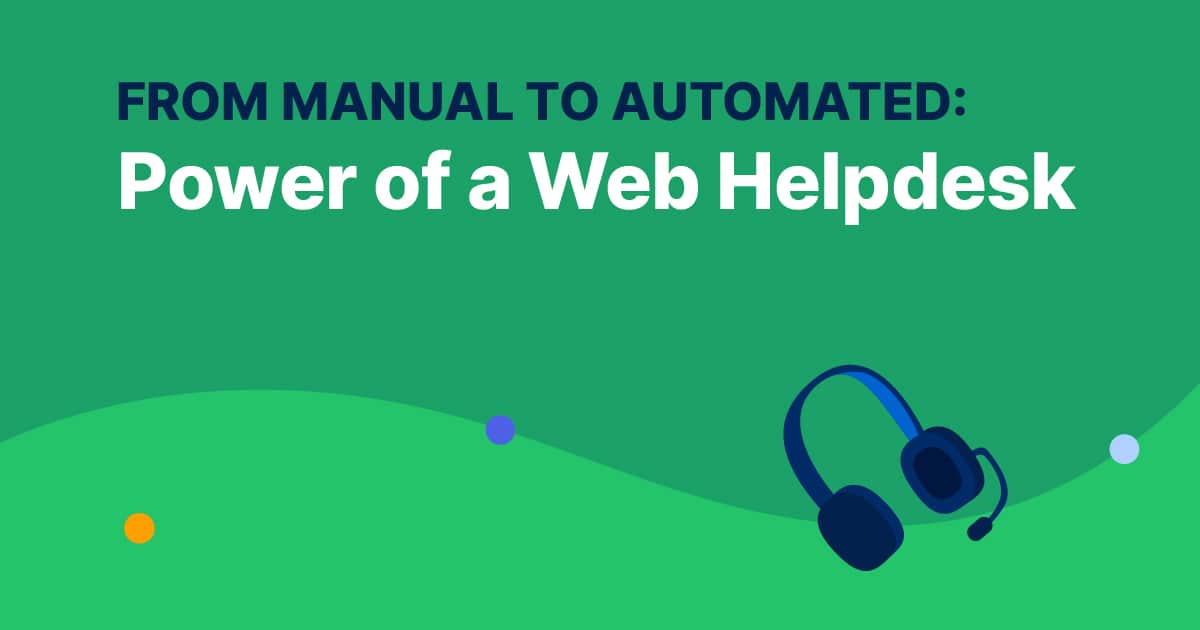Are you tired of feeling like a one-man band, frantically trying to keep up with an avalanche of customer requests and inquiries? Do you long for the sweet sound of harmony, with all your support channels working together in perfect concert? If so, it’s time to upgrade your customer service game with a web helpdesk.
Think of your customer service team like a band. If everyone is playing a different tune, you’ll end up with a cacophony of chaos. And let’s be honest, that’s sure to drive your customers away. But if you can get everyone on the same page and playing in sync, you’ll create a beautiful symphony that leaves your customers singing your praises.
A web helpdesk is like the conductor of that symphony, keeping everyone on track while making sure every note is perfect. With an automated system in place, you can streamline your support process, eliminate manual errors, and deliver a seamless experience that keeps your customers coming back for more.
So if you’re ready to trade in your tambourine for a baton, let’s dive into the power of a web helpdesk and take your customer service to the next level.

Automate Your Work
Capacity’s enterprise AI chatbot can help:
- Answer FAQs anytime, anywhere
- Find relevant documents within seconds
- Give surveys and collect feedback
What is a Web Helpdesk?
A web helpdesk is a cloud-based software solution that helps businesses manage customer support. It lets customers submit support requests online. It also provides a centralized platform for support teams to manage and respond to tickets. It’s an essential tool for businesses that want to deliver exceptional customer service.
How is Web Helpdesk Support Structured? Step-By-Step Guide
Web helpdesk support enables businesses to provide efficient and effective customer support.

Here’s a step-by-step guide to how web helpdesk support is typically structured:
Step 1. A Customer Initiates a Support Request
The support process begins when a customer initiates a support request. This can be done through a web-based form, email, or chat. The customer can provide any information that might be relevant to the issue, such as screenshots or logs.
Step 2. Ticket Creation
Once a support request is received, a ticket is created in the web helpdesk software. The ticket should contain details about the customer, the issue they are experiencing, and also any other relevant information.
Step 3. Ticket Assignment
The ticket is assigned to a support agent responsible for resolving the issue. The support agent communicates with the customer through the ticket, providing updates and requesting more information.
Step 4. Ticket Management
Web helpdesk software provides features to help support agents manage tickets effectively. For example, they can prioritize tickets based on urgency, assign them to the appropriate agent, and track their progress.
Step 5. Ticket Status Updates
As support agents work to resolve a ticket, they can update its status to reflect its progress. Common statuses include “open,” “pending,” “on hold,” and “closed.”
Step 6. Ticket Resolution
Once the issue is resolved, the support agent closes the ticket and notifies the customer. The ticket can be reopened if the issue is unresolved and the support process continues.
Step 7. Reporting
Web helpdesk software can generate reports to help businesses analyze their support performance and identify areas for improvement. Companies can use this data to make informed decisions about improving their support processes.
Integrating a Web Helpdesk with other Customer Support Channels
Integrating a web helpdesk with other customer support channels is crucial for providing a seamless and consistent customer experience across all touchpoints. Here are some common customer support channels that can be integrated with a web helpdesk:
Email is one of the most common support channels used by businesses. Integrating email with a web helpdesk enables enterprises to automatically convert customer emails into support tickets and route them to the appropriate team or agent for resolution.
Better yet, AI-powered platforms like Capacity can intercept support inquiries via email and respond automatically to the user with a solution. Human support agents save time while the AI chatbot responds to the email.
Phone
Phone support is another popular channel for customers to reach out for help. Integrating phone support with a web helpdesk enables businesses to log customer calls as tickets, route them to the right team or agent, and provide a complete history of all customer interactions.
In today’s digital world, texting is one of the most popular ways of communication. Reduce call volume and resolve customer issues faster by adding texting to your web helpdesk. Platforms like Textel can help reduce hold time and long queues by connecting customers with live agents via text over a more flexible channel.
Chat
Live chat has become increasingly popular as a support channel for customers. Integrating live chat with a web helpdesk enables businesses to route chat inquiries to the appropriate team or agent. It also allows them to track chat history and provide personalized customer support in real-time.
Social Media
Many customers prefer to reach out to businesses via social media platforms like Facebook and Twitter. Integrating social media with a web helpdesk enables enterprises to promptly track and respond to customer inquiries on social media.
See how Next Move, Inc. uses Capacity + Facebook Messenger to provide top-notch support to their users:
Self-Service
Self-service portals and knowledge bases are valuable resources for customers who prefer to find answers independently. Integrating self-service portals with a web helpdesk helps businesses track customer usage of these resources. It also enables them to identify knowledge gaps and improve the customer experience.
Top 6 Benefits of an AI Web-Based Helpdesk

An AI-powered web-based helpdesk can provide several benefits to businesses. Here are some of the top benefits of using an AI web-based helpdesk:
Faster Response Times
AI-powered web-based helpdesk can handle a high volume of support requests simultaneously. AI chatbots can respond to customer inquiries in real-time, reducing customer response and wait times.
24/7 Availability
With an AI-powered web-based helpdesk, businesses can support customers around the clock. Chatbots powered by AI can provide assistance and support to customers even outside of regular business hours. As a result, customers are more likely to remain loyal to the brand and keep using their services.
Improved Efficiency
AI-powered web-based helpdesk can automate repetitive and low-level support tasks, freeing support agents’ time to handle more complex issues. This can help businesses improve their support efficiency and reduce their support costs.
Personalized Support
AI-powered web-based helpdesk can use customer data to provide personalized support to customers. AI chatbots can analyze customer data to tailor support recommendations, improving customer experience.
Enhanced Self-Service Options
AI-powered web-based helpdesk can provide customers with self-service options that allow them to find solutions to their issues independently. AI chatbots can guide customers through troubleshooting steps and provide helpful resources, reducing the number of support requests that require human intervention.
Data-driven Insights
AI-powered web-based helpdesk can generate insights from customer data to help businesses improve their support processes. AI algorithms can analyze support data to identify trends and patterns, assisting companies in optimizing their support operations.
5 Common Challenges and Solutions for Web Helpdesk Support

Web helpdesk support can bring many benefits to businesses but presents several challenges. Here are some common challenges that companies face with web helpdesk support (plus the solutions to fix them):
Managing a high volume of support requests:
One of the biggest challenges in web helpdesk support is managing a high volume of support requests. As customer expectations for quick and effective support continue to rise, businesses may struggle to keep up. So, you can invest in AI-powered web-based helpdesk software to automate mundane tasks and provide faster responses.
Providing personalized support:
While AI-powered chatbots can provide efficient and timely support, they may lack the personal touch that customers expect. A solution to this challenge is integrating AI with human agents, who can provide personalized customer support when needed. This can also free up human agents to focus on building customer relationships instead of answering the same FAQ twenty times a day.
Ensuring consistent quality of support:
Providing consistent quality support can be challenging, especially when dealing with many support requests. To address this challenge, businesses should develop clear support processes and train their support agents and chatbots to follow them consistently.
Keeping up with changing customer needs:
Customer needs and preferences can change rapidly, making it difficult for businesses to keep up. A solution to this challenge is to regularly gather customer feedback and then use it to inform improvements to web helpdesk support. Companies can also use AI-powered analytics tools to identify trends in customer behavior and adjust their support strategies.
Integrating with other support channels:
Businesses may use multiple support channels, such as phone, email, and social media, making it challenging to provide consistent support across all channels. To address this challenge, one possible solution would be to connect the web helpdesk with other support channels. Another solution is to use AI-powered tools to maintain uniform responses across all channels.
Best Web Helpdesk Software
Now that we’ve discussed the benefits of an AI web-based helpdesk, let’s look at some of the best software available:
Capacity
I know what you’re thinking, but this isn’t a sales pitch. This is just laying out some facts about our (really awesome) platform. Now that we have that straight, Capacity is an AI-powered support automation platform that connects to your entire tech stack. Our platform answers questions and automates repetitive support tasks. It’s built to automate, deflect, integrate and, well, make your life easier.
It has an all-in-one helpdesk solution that can intuitively answer +90% of repetitive questions, which means you only have to answer questions once. Plus, it also automates monotonous tasks and builds solutions for employees.
Key features:
- AI-powered support automation and chatbot capabilities
- Low-code workflows for automating repetitive tasks and processes
- Knowledge base and a self-service portal for customers
- App integrations and conversational interface for employees
Freshdesk
Freshdesk is a cloud-based helpdesk software that enables businesses to manage customer inquiries. It offers a range of features, including ticket management and analytics tools.
Key features:
- Omnichannel ticket management across email, phone, chat, and social media
- Collaboration tools for internal teams
- Automated workflows and analytics tools
Zendesk
Zendesk is a cloud-based customer support platform that helps businesses manage customer inquiries. It offers ticket management, live chat, and self-service portals.
Key features:
- Ticket management across multiple channels, including email, phone, and social media
- Live chat and messaging for real-time support
- Analytics and reporting tools for insights into customer support metrics
HappyFox
HappyFox is a web-based helpdesk software that provides businesses with various features. It offers ticket management, self-service portals, and automation tools.
Key Features:
- Ticket management and tracking across many channels
- Customizable ticket fields and workflows
- Automation tools for repetitive tasks
See why 1200+ businesses choose Capacity – Try it for free today!














































